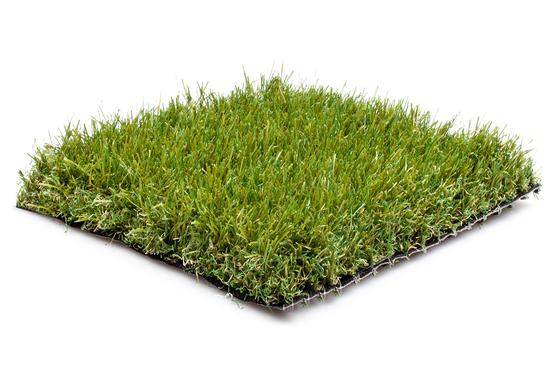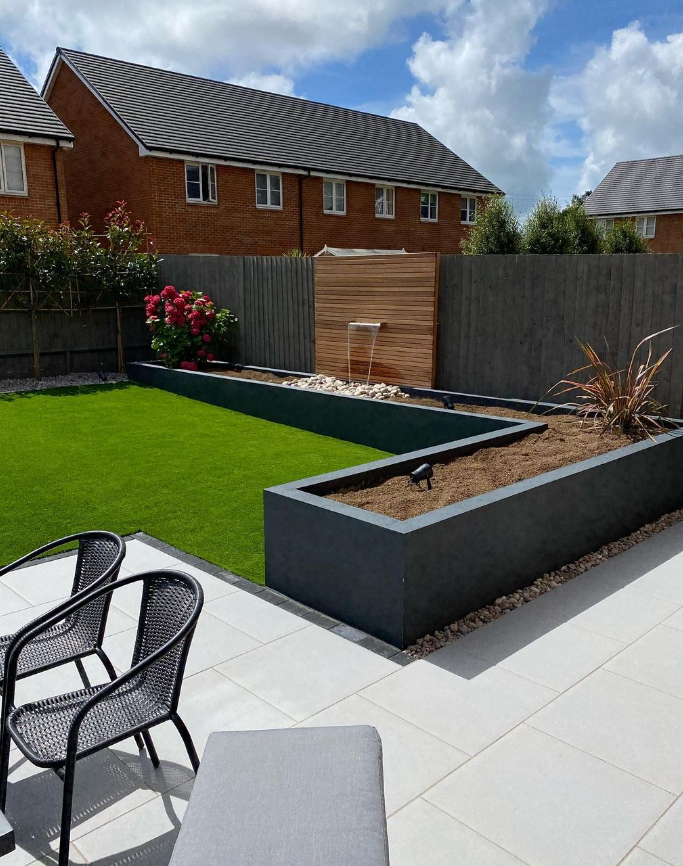
The Right Way to Sand Infill Your Artificial Grass
Adding sand infill to artificial grass is an integral step in ensuring a long-lasting, stable, and visually appealing lawn. While some may overlook this process, the right infill application prevents wrinkles, improves drainage, and keeps grass fibres upright for a natural look.
Without proper sand infill, artificial grass can shift over time, develop uneven patches, or struggle with poor drainage. Incorrect or missing infill may also lead to premature wear and tear, reducing the lifespan of the turf.
This guide will explain why sand infill for your artificial grass is essential, how to choose the right type, and the correct way to apply it. You'll also learn step-by-step techniques to distribute sand evenly and avoid common mistakes that could impact your artificial lawn’s performance.
Why Sand Infill is Important

Benefits of Using Sand Infill
Adding sand infill to artificial grass provides several key benefits. It helps stabilise the turf, preventing movement or shifting over time. The extra weight from the sand keeps the surface smooth and secure, reducing the risk of wrinkles or buckling.
Infill also improves drainage by allowing water to flow through the turf efficiently, preventing puddles from forming. Additionally, it supports the grass fibres, helping them remain upright for a natural appearance. This is especially important in high-traffic areas where flattening can occur.
How It Enhances Artificial Grass Longevity
Sand infill acts as a protective layer, reducing wear and tear on the turf’s backing. It absorbs impact from foot traffic and heavy furniture, preventing premature damage.
Infill also minimises weed growth by covering the base layer and blocking soil exposure. With proper artificial lawn maintenance, one that is well-infilled lasts longer and retains its appearance for years.
Choosing the Right Sand Infill
Types of Sand for Artificial Grass
The most commonly used infill is silica sand, which stabilises the turf and supports grass fibres while allowing water to drain efficiently.
For pet-friendly lawns, zeolite pet odour infill sand helps control odours by neutralising ammonia from pet waste. Acrylic-coated sand, such as Envirofill infill offers antimicrobial protection, making it ideal for high-traffic areas.
Avoid beach sand and play sand, as they compact easily, restricting drainage and making the surface harder to maintain. Having the best sand for your artificial turf will ensure it meets your requirements.
How Much Sand Infill is Needed
The required amount of infill depends on pile height and usage. Most artificial lawns need 4–5kg per square metre for proper support.
To calculate the right amount, multiply the lawn area by the recommended infill level. Applying too little can cause the fibres to flatten, while too much may make the surface feel too firm. Even distribution is key to maintaining stability and appearance.
Step-by-Step Guide to Applying Sand Infill

Preparing the Artificial Grass Surface
Ahead of your artificial grass installation, before adding sand infill, ensure the material is completely dry. Moisture can cause sand to clump, leading to uneven distribution. Start by inspecting the turf for wrinkles, loose edges, or uneven areas—these should be fixed before proceeding.
Remove any leaves, dirt, or debris using a brush or leaf blower. Then, use a stiff-bristled brush to lift the grass fibres, making it easier for the sand to settle between them. This preparation step ensures a smooth and consistent infill application.
Evenly Distributing the Sand
For an even spread, use a lawn fertiliser spreader or gently scatter the sand by hand in small sections. Work in a grid pattern to ensure consistent coverage, avoiding heavy build-up in any one area.
Once the sand is spread, use a stiff brush to work it into the grass fibres. Brush in multiple directions to ensure it settles properly. Avoid overloading certain spots, as this can create an uneven surface.
Brushing and Settling the Infill
Using a Power Brush vs. Manual Brushing
Brushing is essential to evenly distribute the sand and help it settle into the turf. A power brush (or motorised broom) speeds up the process, making it easier to lift grass fibres while spreading the infill efficiently. This is ideal for larger areas or professional installations.
For smaller lawns, manual brushing with a stiff-bristled broom works just as well. While it requires more effort, it gives you better control over how the sand is worked into the turf. Whichever method you choose, always brush against the grain of the grass to lift the fibres and prevent matting.
Ensuring an Even Finish
After brushing, inspect the lawn for clumps or uneven distribution. If any areas look overfilled, lightly spread the sand using a rake or brush. Walk across the surface to check for consistency—if it feels too firm or unstable, additional brushing may be needed.
Over the next few days, the sand will continue to settle naturally. Regular brushing helps maintain an even surface and keeps the artificial grass looking fresh.
Common Mistakes to Avoid

Using the Wrong Type of Sand
Not all sand is suitable for artificial grass. Beach sand and play sand compact easily, restricting drainage and making the surface hard.
For pet-friendly lawns, zeolite sand is a better choice as it neutralises odours, unlike standard silica sand.
Applying Too Much or Too Little Infill
Excessive infill can make the surface too firm and affect the grass’s natural look. Too little won’t provide enough support, causing the fibres to flatten.
Follow the recommended infill amount based on pile height and usage. Seasonal factors like heavy rain may require occasional top-ups to maintain the right balance.
Applying sand infill correctly is essential for maintaining the stability, durability, and natural appearance of artificial grass. It prevents shifting, enhances drainage, and keeps the fibres upright, ensuring a long-lasting, high-quality lawn.
Choosing the right type of sand, using the correct amount, and following a proper application process all contribute to better results. Regular brushing and maintenance will help keep the turf in top condition, reducing wear and tear over time.
By following these steps and avoiding common mistakes, homeowners and installers can achieve a well-balanced, professional-looking artificial lawn that stays in great shape for years. If you’re unsure how or the right product for you, contact us at Tuda Grass to make the most of your artificial lawn.


